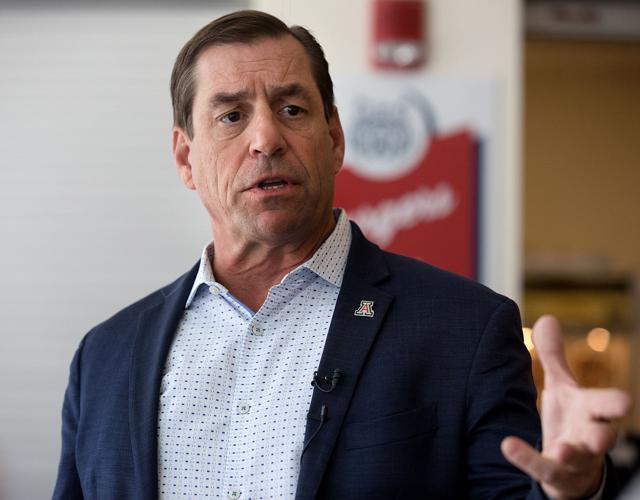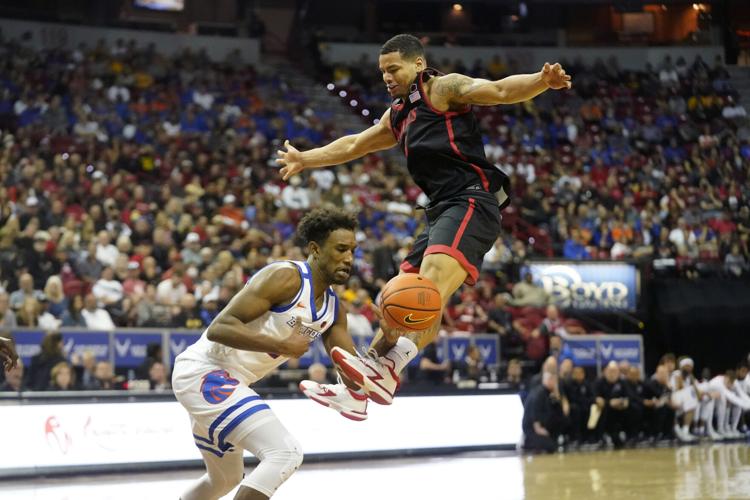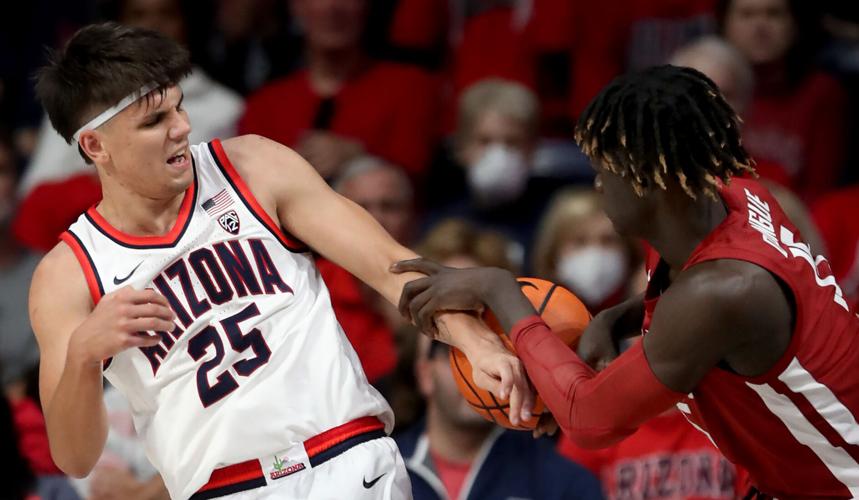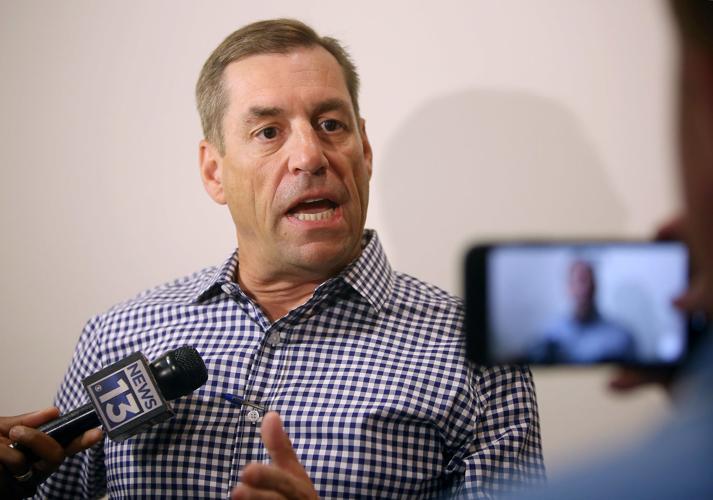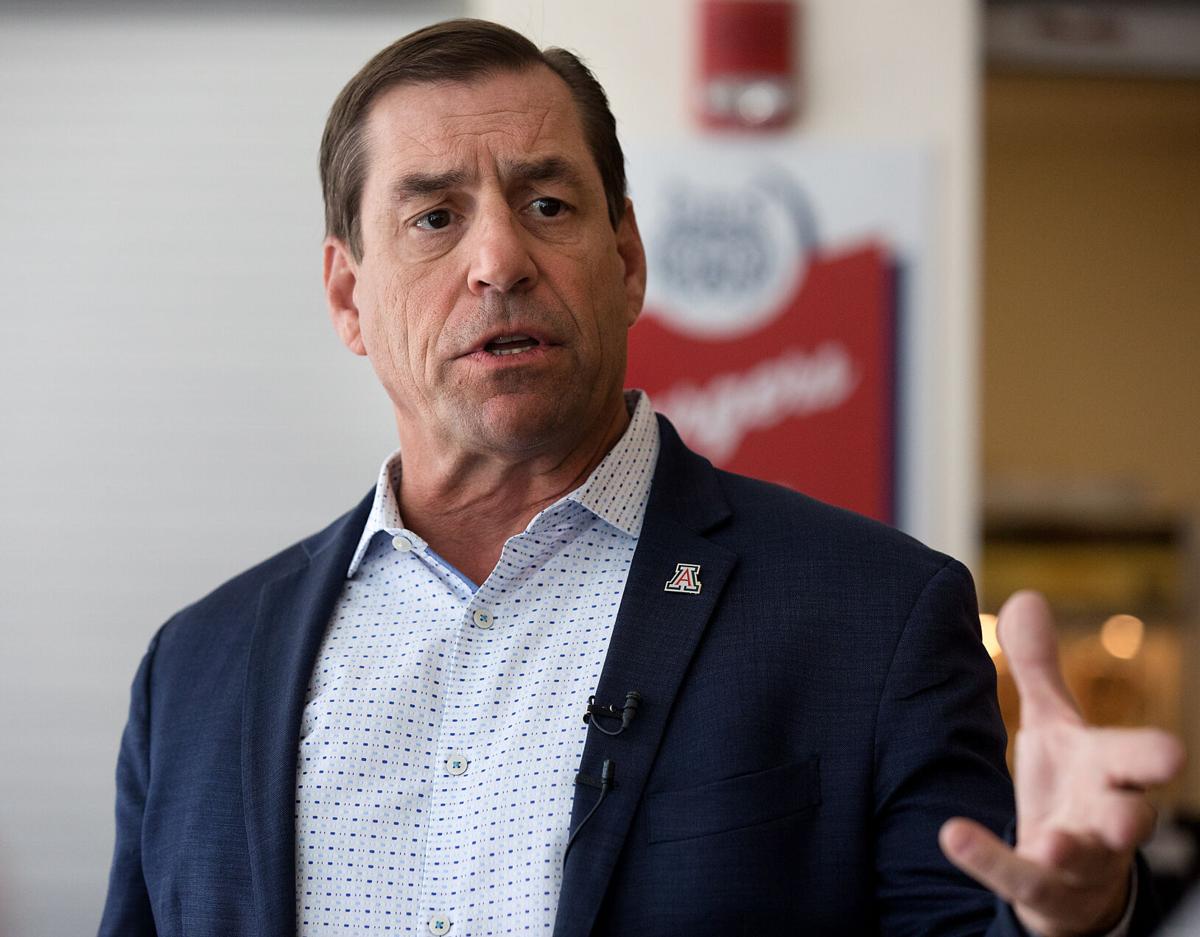In many ways, Dave Heeke is living a college basketball fan’s dream.
As a first-year member of the NCAA Men’s Division I Basketball Committee, Heeke is now taking the second of two expense-paid trips this season to the NCAA’s hometown of Indianapolis. There, he gets to watch college basketball, talk college basketball, read analytics about college basketball … and then watch and talk some more college basketball.
In between those trips, he’s also been told to watch as much college basketball as he can — either in person, live on TV or via recording — with particular emphasis on the six conference he is assigned to focus on. Heeke is the lead evaluator for the Mountain West, Western Athletic and Sun Belt conferences, and the secondary evaluator for the ACC, Missouri Valley and Big Sky.
Except Heeke still has a few other things to do. Like being Arizona’s athletic director.
And having a life.
“I love the sport of basketball, so watching more games and doing more of it …” Heeke says, with a brief pause. “Maybe my wife doesn’t enjoy it quite as much.”
Yet he has no complaints.
“It’s a tremendous honor to be on the committee, and with that comes the responsibility to engage and invest time in what is maybe the best sporting event that we have in this country, the NCAA Tournament,” Heeke said. “We owe that to the conferences, the coaches and the players throughout the country.
“So I don’t look at it as a burden. We signed up for that, and we’re going to do our very best.”
In a recent interview with the Star, Heeke detailed how he joined the committee, how it sifts through data and how it is impacting his time. Here were some of the key points:
Actually, he didn’t sign up for it
Heeke said the Pac-12 appointed him to the committee in July to replace UCLA AD Martin Jarmond, after UCLA and USC announced on June 30 that they were moving to the Big Ten in 2024.
Heeke’s previous two stints on the NCAA baseball committee, and Arizona’s basketball tradition, made him a natural candidate. Two previous Arizona ADs, Cedric Dempsey and Jim Livengood, also served on the committee, while another, Greg Byrne, now serves on it as Alabama’s AD.
“I was happy to serve, but I did not apply,” Heeke said.
Once Heeke joined, he picked up his conference assignments and began meeting with fellow committee members and conference officials regularly via conference call. He then showed up in Indianapolis last month when the committee sorted out a to-date 68-team bracket
The top 16 teams in that field were revealed on CBS on Feb. 18.
Heeke has returned to Indianapolis this week while the committee determines the final bracket, which will be released on Sunday at 3 p.m. on CBS. Then, he’ll travel during the tournament to oversee management of the sites — the other, much-less-talked-about part of a committee member’s job.
What he can, can’t do
In the committee’s early reveal, Arizona was rated the sixth overall seed and given the West’s No. 2 spot, while UCLA was given the eighth overall seed and inserted as the East’s No. 2 seed.
Heeke said the reveal was not a projection but only what the tournament would look like if it were held at that point, but he did say it has “held up pretty close” in the past. The reveal suggested the Wildcats would have stayed ahead of the Bruins had they had comparable results the rest of the season, but Arizona has since lost to ASU and UCLA.
The early reveal caused a little friction for UCLA coach Mick Cronin, who hinted that the Bruins were being mistreated because of their decision to bolt the Pac-12, but Heeke is limited to saying only factual information about other Pac-12 teams.
When it comes to Arizona, he can’t speak at all. In fact, Heeke has to leave the room.
“If they’re looking at Arizona, I’m out,” Heeke said. “Or if they’re going, Hey let’s look at Arizona, Tennessee and UCLA,’ I’m out. If someone wants to talk about Arizona and Tennessee and that game, I can’t even say, `Yeah, I was at the game and we played really well.’ I’m out. I can’t comment.”

One of Dave Heeke’s primary conferences to monitor for the NCAA Selection Committee is the Mountain West, featuring the likes of San Diego State guard Matt Bradley, right, shown defending Boise State forward Abu Kigab in the 2022 MWC championship game.
His primary responsibility
What Heeke is expected to comment considerably on are the teams within the Mountain West, WAC and Sun Belt — how they’re doing within their conferences, trends, injuries and anything else that might affect their résumés. Even a league that traditionally sends only its automatic qualifier — what is informally known as an “AQ” or “one-bid” league — requires a deep look, Heeke said.
There are two reasons why: That league might produce an at-large contender that doesn’t win its conference tournament, as Heeke said Southern Miss was tracking to be earlier in the season before falling into the 80s of the NET; and because automatic qualifiers out of those leagues must be seeded fairly.
After all, no top-seeded team wants to open against a 16-seed that is really a 13 or 14 in disguise, as Arizona might have argued Wright State was last season after the Wildcats’ 87-70 first-round win.
Arizona fans might also argue that Buffalo was an underseeded as a No. 13 when it pummeled the fourth-seeded Wildcats in the first round of the 2018 NCAA Tournament. Or that Houston was as an underseeded No. 5 when it beat the top-seeded Wildcats last season.
“It’s very important to the 1-, 2- and 3-seeds that the 10, 11 and 12 are in the right spots,” Heeke said. “Most people will say, `Oh, they’re an AQ, so just put them in at the 15.’ Well, if you’re the 2 (seed) you might be saying, ‘That’s not a 15.’ “
NET gains, losses
The NCAA shovels a load of data at Heeke and other committee members to help sort it all out, including the NET, KenPom, Sagarin, BPI, KPI and schedule strength as noted on the NCAA’s “team sheets,” which are essentially résumés of each team. Those metrics are intended to be put into context with head-to-head results, records versus common opponents and injuries, among other factors.
Sometimes viewed as a sorting tool for teams, the NET serves mostly to categorize games in Quadrants. Top-tier Quad 1 games, for example, are defined as home games against teams rated 1-25 in the NET, neutral-site games against teams rated 1-50 and road games against teams rated 1-75.
“I think it’s sometimes misunderstood,” Heeke said. “The NET is the primary driver for the committee to begin to categorize teams. We use all those other metrics, but you have to watch the basketball to understand the styles of play, how they are offensively and how they’re going to play as you get down further down the road. Those are important pieces.
“You need to understand the game. You can’t do that just on metrics. Or else we would just rank them by the number — NET, Kenpom, whatever.”

The loss by Arizona and Kerr Kriisa, left, to Washington State and Mouhamed Gueye on Jan. 7 seemed like a killer at the time, but the Cougars since have risen into the top 75 of the NET.
It’s a fluid system too. The NET ratings are updated every day, with computations of Quad opportunities also changing as a result. For example, UA’s Jan. 7 loss to Washington State had fluctuated between a Quad 2 loss and a résumé-killing Quad 3 loss as the Cougars have moved over and under the NET 75 ranking. (Losses to teams 1-75 are Quad 2 and 76-160 are Quad 3, but the Cougars entered this week at No. 70.)
“We’re not just looking at wins and losses,” Heeke said. “Strength of schedule gets impacted by other games that are being played. So all the sudden if their number changes, the metrics change.
“It goes back to the dynamics of, `OK, let’s talk about that conference. Let’s look at those side by side. (Some teams) don’t have as many Q1 wins, but look at what they did, look at how they scheduled in preseason. Look if they challenged themselves and won the games they were supposed to win.”
Another complication is measuring teams that naturally get a lot of Quad 1 opportunities by playing in a top-rated conference against teams in mid-major leagues that might only get a handful.
“You can’t penalize a team for the schedule that they played through their conference,” Heeke said. “There are a number of rankings and metrics out there. We compile all of that and evaluate teams through all of that from week to week. And then through that time period, we’re looking at groups of teams. I look at the conference standings every morning on those groups because you can’t just be frozen to your own league that you’re watching. You’ve got to compare those multiple-bid leagues with other multiple-bid conferences. It’s a lot of stuff.”
‘Checking scores every night’
On top of taking in all the NCAA-provided data, Heeke also enlists the help of Arizona sports publicists Matt Ensor and Nate Wiechers to stay on top of what’s going on with his assigned conferences. Other UA staffers help Heeke with his normal duties, too.
But it still comes down to what Heeke can see and do himself. Before UA’s game at USC on March 2, Heeke said he had watched six games queued up on his iPad over the previous 24 hours — and that was on top of catching the Wildcats’ men’s and women’s teams in action that day.
“I’m checking scores every night,” Heeke says. “I’m watching games every night on all the different platforms. I’m especially focused on those six conferences that I’m engaged in, but I also want to look at the top seeds and the best teams in the country and kind of see what everything is.
“If I miss a game, it’s very important that we take information from those conferences. We talk about it like, ‘Hey, let’s download these games, or watch those on an airplane.’ “

Arizona AD Dave Heeke has myriad duties as a member of the NCAA Men’s Division I Basketball Committee, whose work will be revealed on Selection Sunday.
Conference calls
Every month or so, Heeke and another committee member will get on a call with staffers of the conferences they are assigned, usually that conference’s commissioner, publicists and the staffer who specifically oversees men’s basketball.
While that gives an opportunity for conferences to make a sales pitch, Heeke says “everyone knows the responsibility that comes with” discussions about NCAA Tournament selection.
“They share the successes and the trend lines and help us understand what’s behind the metrics,” Heeke said. “They’re proud of their conferences. They’re proud of what their teams are doing. They want to make sure that we don’t overlook anything.
“It is a very business-like meeting. They understand who the best teams are. They understand that they might only be looking at an AQ. But I also want to ask the question, ‘How good do you think your team is?’ “
The final touches
It all comes to a head this week in Indianapolis, where Heeke says the committee will be “basically sequestered” in a hotel meeting room as it watches the data and games roll in, adjusting the bracket as needed.
That’s where Heeke said one of the biggest misconceptions about the committee’s work springs from.
“I think sometimes it’s viewed as a dark room with a lot of smoke filled in it,” Heeke said. “That couldn’t be further from the truth. This is a very professional, dedicated group of college administrators who care about college basketball and understand the responsibility.
“It is a total focus on getting to the right decisions or the best decisions. People will always debate if it’s the right decision. But the amount of time, effort, energy and how seriously the committee takes its role, I don’t know if I’m surprised — I’m just impressed and proud.”


